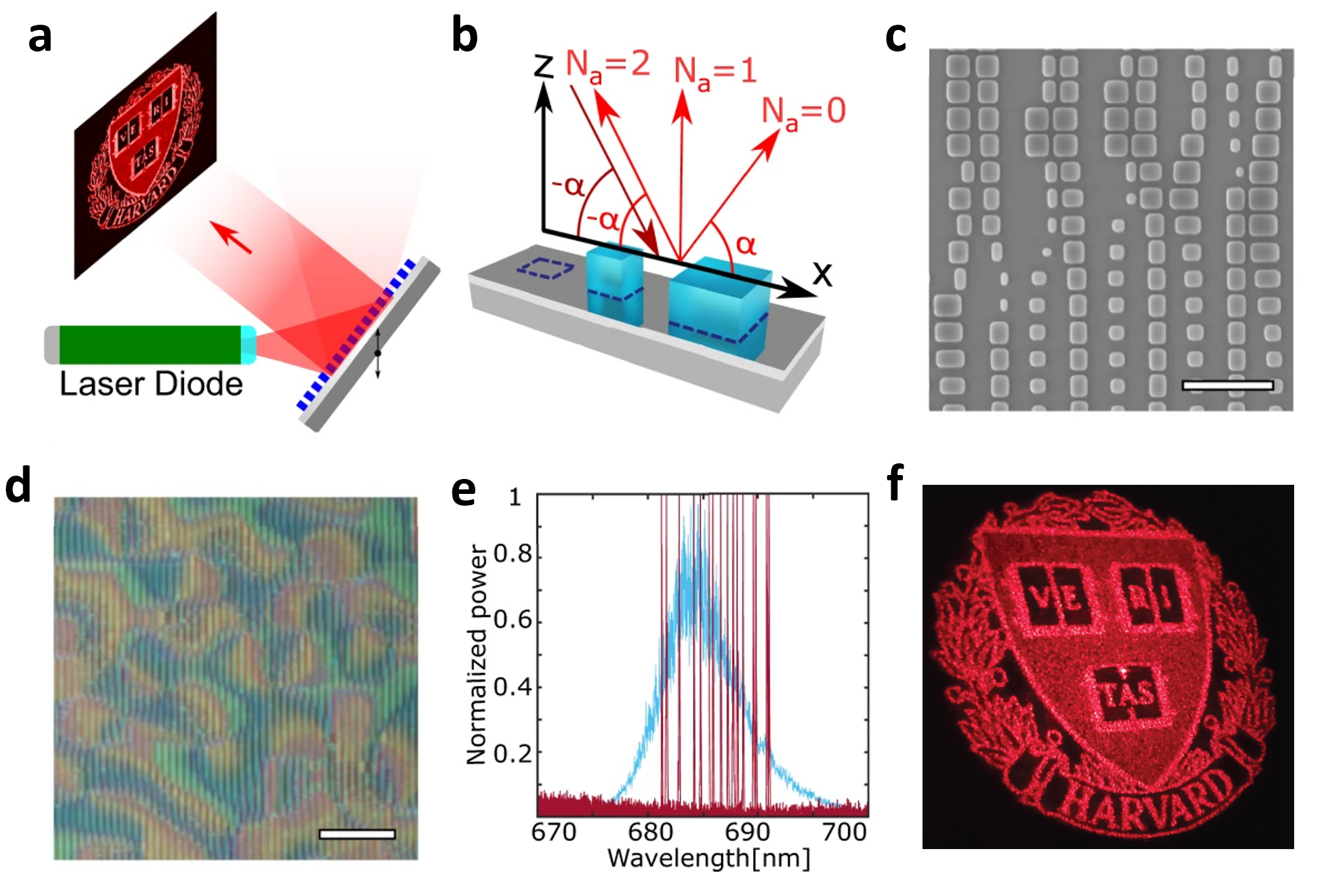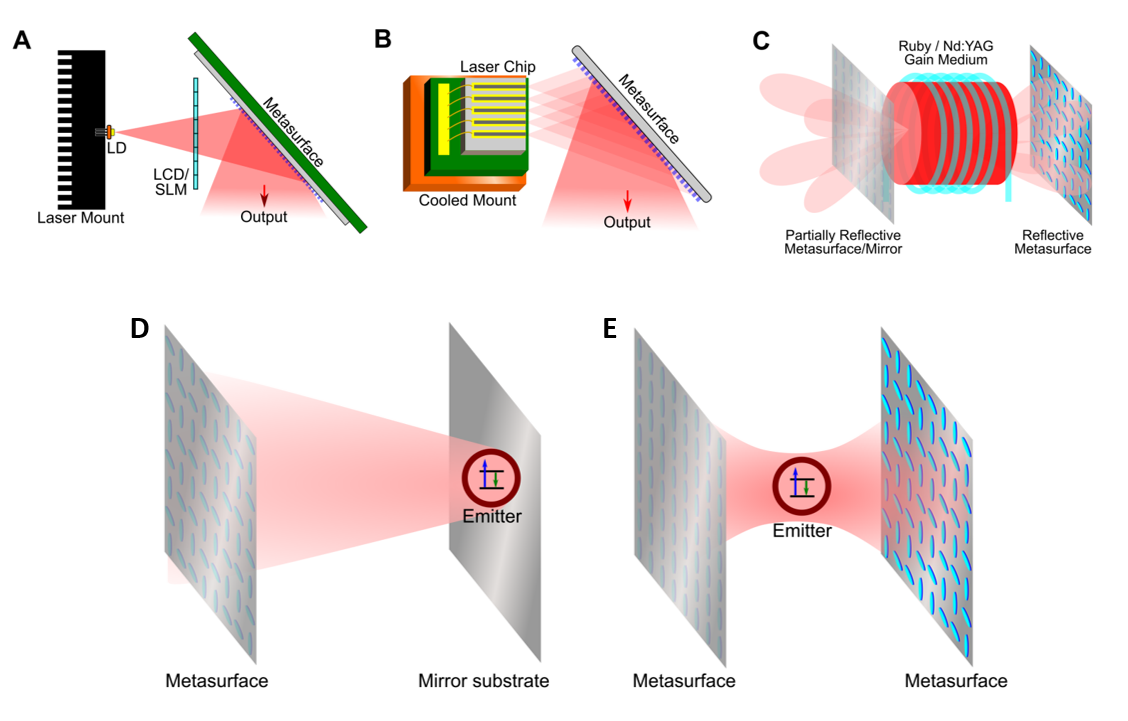Placing emitters in optical cavities significantly increases their interaction strength with light and has led to significant advances such as the invention of the laser. Arrays of nanostructures (metasurfaces) can be used to stabilize cavities and achieve an advanced emission control. For example, in [1], a multifunctional metasurface provides feedback for the gain medium, makes its emission wavelength tunable and shapes the emitted wavefront. This is shown by the emission of a lasing hologram (Figure 1).

Figure 1: Wavelength tunable external cavity laser with integrated wavefront control [1]. (a), A multifunctional metasurface can be used to form a cavity and simultaneously shape the emitted wavefront. The laser diode is anti-reflection coated on one side and the metasurface acts as an external mirror to close the cavity. (b), The design of the metasurfaces is based on supercells, where each order's response can be individually controlled. (c), SEM image of the metasurface, scale bar 2 µm. (d), Optical microscope image of the metasurface, scale bar 20 µm. (e), The emission (red) is wavelength tunable across the full range of the gain medium (blue). (f), The emitted wavefront can be fully controlled, here demonstrated with a lasing hologram.
In [3] we show a further reduction in the mode volume of cavities, and [4] demonstrates control over the cavity mode shape. However, the capabilities of nanostructure arrays extend far beyond these aspects. Nanostructure arrays can locally manipulate a wavefront w.r.t multiple of its properties at the same time, including its direction-dependent phase, dispersion, and polarization. They are hence positioned to not only provide complex feedback to emitting systems to enhance and manipulate their emission but also to couple multiple emitting systems (see e.g. the invited comment in [2], Figure 2).

Metacavity configurations for emitter control (see invited comment [2]). (A-C), Metacavities are of interest for more than stabilizing cavities. They can enable: (A), compact, tunable emission control. (B), the coupling of multiple emitters. (c), and direction dependent lasing responses. (D-E), they can be applied to a wide range of emitters, e.g. controlling or coupling single or multiple 2-level systems. Advanced mode shaping requires a metasurface on each side of the cavity.
[1] Spaegele, C., Tamagnone, M., Kazakov, D., Ossiander, M., Piccardo, M. and Capasso, F., 2021. Multifunctional wide-angle optics and lasing based on supercell metasurfaces. Nature communications, 12(1), p.3787.
[2] Spaegele, C., Capasso, F. and Tamagnone, M., 2022. Open Optical Cavities based on Metasurfaces. Reviews of Electromagnetics, 1., invited comment
[3] Ossiander, M., Meretska, M.L., Rourke, S., Spaegele, C., Yin, X., Benea-Chelmus, I.C. and Capasso, F., 2023. Metasurface-stabilized optical microcavities. Nature Communications, 14(1), p.1114.
[4] Mason, S., Meretska, M. L., Spaegele, C., Ossiander, M., and Capasso, F. (2023). Metasurfacecontrolled holographic microcavities. arXiv preprint arXiv:2310.11348.
